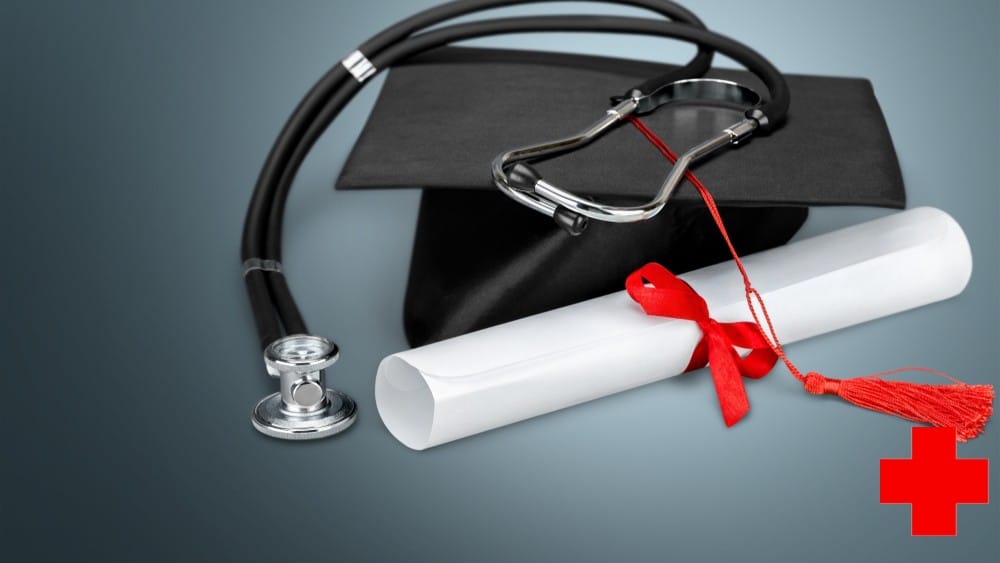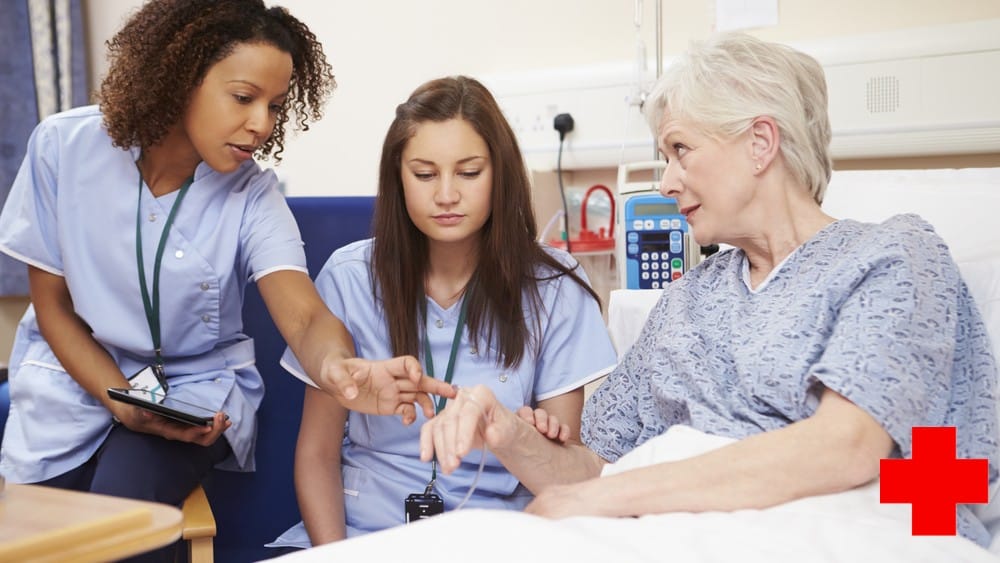Hello, and welcome to our guide on nursing technology.
As you are keeping up with your nursing education, it’s also essential to keep abreast of the newest technology in the industry.
We promise you will gain comprehensive insights into all aspects of nursing technology and how to keep tabs with emerging tech in nursing when you read this article to the end.
You will be informed on:
- List Essential Technology in Nursing item
- Upcoming Technology in Nursing
- How to keep up with Nursing Technology
With that said, let’s get into our deep dive on nursing technology!
Essential Technology in Nursing

Here are some of the essential advancements and new technology in health care systems that save time, money, and lives.
Essential Technology in Nursing
Health information technology has advanced leaps and bounds over the past decades.
Driven by the field of nursing informatics, these electronic medical records have become the mainstays of any hospital.
What used to surmount years worth of a paper trail for a single patient has now been reduced to a single search.
Today’s Electronic Health Record (EHR) Electronic Health Record (EHR) is a convenient method and process that helps get necessary information about a patient in a fast and efficient manner.
This information is easily accessible for nurses and doctors, but the entire healthcare system across the hospitals also has a secure method of sharing the information with those who need it.
From the simple information of the patient history and other data through the EHR, nurses will determine the next steps in their diagnoses and patient care.
Wearable Devices
Wearable devices for everyday use are already commercial products available for consumers to buy and use daily.
This includes smartphones and smartwatches, which have built-in apps and trackers for health purposes.
More advancements in these technologies have spawned into heavy-duty, more accurate versions used for inpatient health monitoring.
Wearables are also a great way to educate patients about their healthcare concerns – letting them know and understand what their numbers mean will help them monitor their conditions on their own.
They can also put the patients at ease – admitted patients who are nervous around medical technology can be eased by these simple yet powerful devices, helping them understand their usage and comfortable will the entire hospitalization process.
Patient Monitoring
Alongside wearable devices is monitoring patient data – an ever-important part of the nurse’s everyday activities.
Vital signs, including blood pressure, body temperature, pulse, respiration, and more, can be accessed through applications and other monitoring systems.
These easy-to-use and access systems can also help nurses prioritize their time and their tasks in real-time, on the fly.
Making rounds is also made less time-consuming, as patient monitoring systems can be equipped with alerts and notifications communicated to both the nurse and the patient.
The transparency and availability of the information will help nurses determine their next course of action.
Point-of-Care Systems
Point-of-care systems and testing involve using portable testing devices at the point of care – in the case of hospitals, and it’s right by the patient’s bedside.
Instead of transporting the patient to another wing or level of the hospital, special point-of-care testing will bring the test to the patient.
Traditional systems also involved collecting specimens in one laboratory while sending away the samples to another laboratory, thus lengthening the process and making it logistically difficult for all parties involved.
Hospitals have deployed these point-of-care devices for the convenience of the admitted patient, their nurse, and their technician.
These devices, which are rapidly developed testing apparatus, also help outpatient and walk-in guests, ramping up testing capabilities in the area.
This became an important development in the COVID-19 pandemic, where constant testing and isolation needed to be carried out for all individuals, whether they were in contact with an infected person.
These systems also benefit from more rapid test results but sacrifice accuracy by a small amount.
Telehealth Systems
There was a time when on-call doctors were the norm.
The telehealth system can be called a return to the form of this tradition.
These telehealth and telemedicine meetings over the internet feature a real-time conversation between nurse/doctor and patient that feels natural.
Just like your now-regular conference calls due to the pandemic, how can you call your healthcare provider and consult remotely.
The healthcare professionals doing the online assessment will ask the patient questions and physically assess their patient.
They may also enlist the help of patient and health monitoring apps to get information that will be critical for diagnosing and treating their patients.
This also avoids healthcare providers risking infection that could be transmitted in face-to-face interactions with patients – a critical factor in the workflow of the pandemic.
Clinicians can now fulfill their role in a safe environment while equipped with the right tools to assess and diagnose their patients properly.
It is also convenient and cost-effective on behalf of the patient – who will be able to receive the care they need while they are in the comfort of their own home.
Upcoming Technology in Nursing

Every day, new advancements in the field are being rolled out to improve healthcare settings and ensure patient safety and satisfaction.
Here is some medical technology that will come to your hospital very soon.
Robotics
The worldwide nursing shortage is a worrying problem.
As there continue to be many people entering the nursing practice, so too do the needs of the healthcare systems.
Technological advances in robotics could lend a hand – literally – to this industry.
Labor-intensive tasks such as the transportation of medical devices, the sanitation of medical tools, heavy lifting, and navigation within the hospital campus can be alleviated using robots and robotic systems.
These tasks require a lot of time but do not need intense decision-making capabilities.
Thus, robots could work mechanically with a continuous schedule and consistent accuracy.
This is helpful for nurses who have more physical needs and those workers who have been affected by the long working hours.
As staffing and helping hands become a need, many processes can be automated using intelligent robots.
Some androids have also entered the medical field as companion robots that fulfill the social needs of patients.
A lot of studies and innovations are planned to see the extent to which robotics will help the field of patient care, but it is exciting to see what can be accomplished by these robots.
Artificial Intelligence
A.I. chatbots have already been a mainstay at health websites, which allow users to input information and the application to read a result.
These results cannot be taken as an accurate diagnosis, but they help patients put themselves on the right path in addressing their health matters.
Allowing an A.I. to monitor patient information and their vital signs can help the day-to-day work of a nurse.
Instead of constantly monitoring patient information, they can save time and have artificial intelligence systems calculate probabilities and alarm nurses and doctors of high-risk cases and sudden events that need immediate decision-making.
Artificial intelligence’s strength is to eliminate human error, which can affect the survivability of each case.
After all, despite their intelligence and diligence, no nurse is perfect – even nurse practitioners or those with an MSN.
These A.I. and algorithms must be guided by the expertise of those in the nursing profession in order to be accurate and successful.
Human touch is always critical in healthcare technology – but A.I. may be a landmark technology that will help alleviate some of the more time- and resource-consuming work that comes with the work of registered nurses.
3D Printing
The functionality of 3D medical products has been outstanding, and they help nurses do their job more efficiently.
Using technology like 3D printing will allow us to reach customized solutions simply using patient data and engineered medical supplies.
Another area in which 3D printing can assist nurses is in the area of health education.
Nursing care also involves explaining complex medical processes to patients who are often anxious and stressed about patient records.
A good nurse will be able to explain, in clear messaging, the conditions and instructions that the patient can understand.
With 3D-printed apparatus and specialized devices, communication of patient outcomes and instructions could be a breezier task.
Virtual Reality
Healthcare organizations are also exploring the many uses of virtual reality, especially when training and decision-making on the job.
Virtual reality can cut down on expensive laboratory costs and make the trial-and-error required of studying medicine and patient care less risky and more affordable.
The virtual labs can help allow more specialties to develop and create a generation of nurses with even more theoretical and practical knowledge in their field.
It has been observed that the passing rates of nurses who worked in virtual reality labs had similar test passing rates to those who trained with physical mannequins.
As virtual reality simulations continue to ramp up, their use in the educational sphere becomes a more promising blend of remote and hands-on experience.
How to Keep Up with Nursing Technology

If you are serious about advancing your nursing career, you also want to be part of this wave of new technology.
You can have approaches to make sure that you stay ahead of the curve and don’t get left behind by your peers.
Read the news
Different industries and their technological marvels land the front page of the news once.
In the healthcare industry, this is very common – after all, informing the general public of ways that their health and lives can improve is of utmost importance.
Keeping yourself aware of the comings and goings in healthcare technology will go a long way.
After all, you might soon be the one handling and monitoring these devices during your nursing shifts.
Enroll in courses
Never stop learning – this is an important tenet for anyone, no matter the profession.
This is true in nursing – despite the lectures and clinical hours it took to complete your hectic degree, there is still so much more to learn outside of the classroom.
After all, if you are a registered nurse who regularly renews your license, it is important to be up-to-date with your professional development units.
Enrolling yourself in a special course regarding new technology is a helpful way to get an edge in your nursing career.
These specializations and niche knowledge make you a better nurse and a better fit at the institutions and healthcare organizations that you want to work for in the future.
Conclusion

New technology and healthcare information have drastically changed the way that nurses work.
Being good at understanding and using such technology is now part and parcel of the nursing experience.
Even if you are not an electronics genius, knowing how these new technologies work gives you an edge in the hiring process.
The older generation of nurses and those not familiar with working with these devices will have a disadvantage in today’s nursing environment.
Of course, behind every introduced technology are experts and nurse leaders who help determine the use and efficiency of such systems and gadgets.
It is important to be open to these technologies and become part of the conversation that will integrate the nursing profession and the advancements in medical technology.
FAQs

What are the benefits of technology in nursing?
Technology in nursing has improved the lives of nurses by cutting out many of the hours done doing busy work. Due to this automation and precision, errors and miscommunication are cut down, saving time and saving lives.
Will nurses be replaced with technology?
If you’re holding onto nursing as a steady career path, rest assured that your belief will not change for a long time coming. Nursing can be considered as much art as it is a science, and while patients will become more comfortable with the technology in front of them, nothing is as comforting as the care of another human being.









